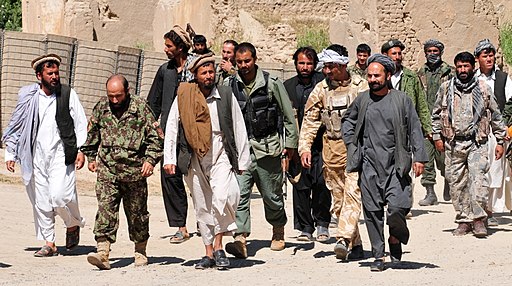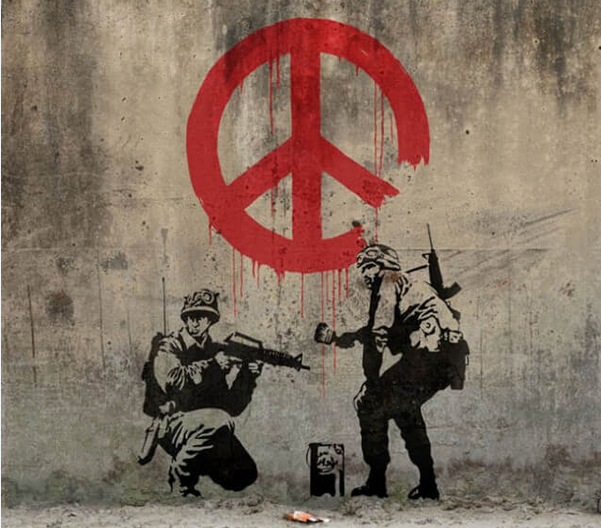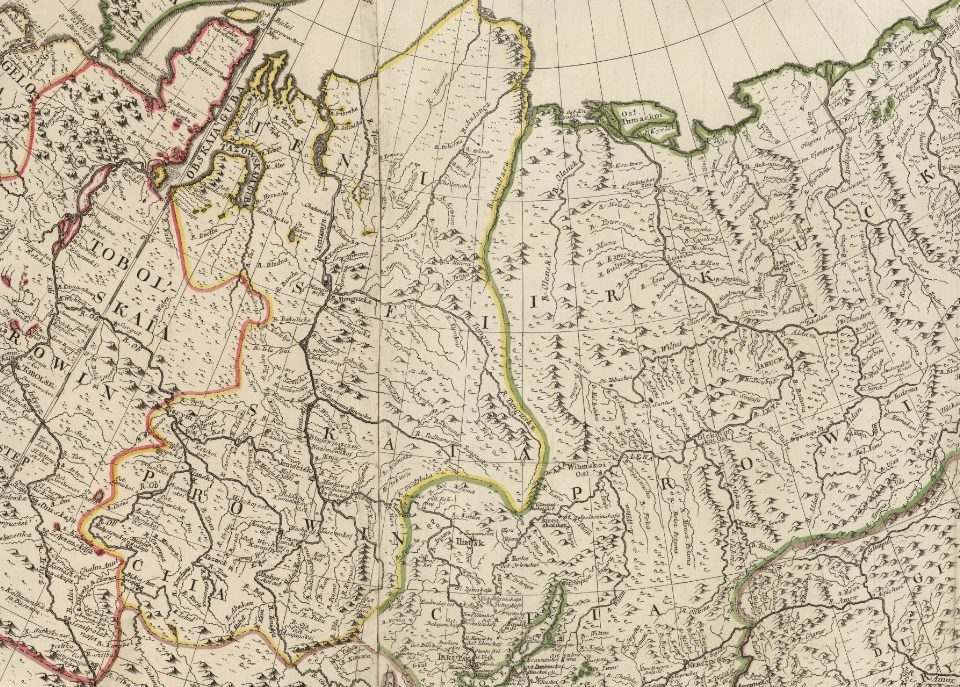


Transitional Justice and Property: Inextricably Linked
16 April 2023
UN Peacekeeping: Three Strategies on The Ground
16 April 2023By Adam Baczko
Contrary to the common perception of wars as lawless spaces, international norms influence the practices of warring parties. While prosecutions by international courts like the International Criminal Court often yield mixed results, their actions and those of the United Nations, NGOs, and the media, are impacting the conduct of contemporary warfare(1)Élisabeth Claverie, “Mettre en cause la légitimité de la violence d’État. La justice pénale internationale comme institution, comme dispositif et comme scène” [Questioning the legitimacy of state violence. International criminal justice as an institution, a tool, and a stage], Quaderni 78, 2012, p. 67-83..
Investing in the Law for Self-Protection
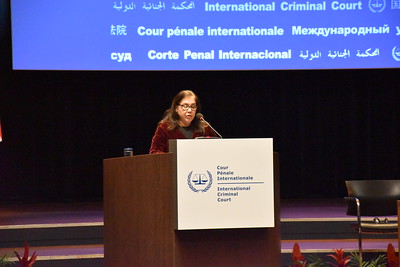
General Debate, 3 décembre 2019 | © Coalition for the International Criminal Court
This observation is all the more noteworthy since the States guaranteeing the stability of the international system, as permanent members of the United Nations Security Council, are the first to disregard international humanitarian law when they are involved in a conflict. Cases in point include the United States in Afghanistan and Iraq, and Russia in Chechnya, Syria and Ukraine(2)Philip Alston, Report of the Special Rapporteur on Extrajudicial, Summary or Arbitrary Executions. Study on Targeted Killings, Geneva, United Nations Human Rights Council, 2010; Amrit Singh, Globalizing Torture. CIA Secret Detention and Extraordinary Rendition, New York, Open Society, 2013; Anne Le Huérou, Aude Merlin, Amandine Regamey and Elisabeth Sieca Kozlowski (ed.), Chechnya at War and Beyond, London, Routledge, 2014.. Similarly, the Israeli army has created a legal department to limit the consequences of international law violations by its soldiers. Forensic Architecture director Eyal Weizman reports that these Israel Defense Force lawyers, who call themselves ‘Anarchists against the law'(3)Craig Jones, The War Lawyers: The United States, Israel, and Juridical Warfare, Oxford, Oxford University Press, 2020., , are inspired by critical legal studies – a field that developed in the context of the 1970s civil rights movement in the United States with the goal of eventually transforming international jurisprudence(4)Eyal Weizman, The Least of All Possible Evils: Humanitarian Violence from Arendt to Gaza, New York, Verso Books, 2011. In 2005, Lisa Hajjar had already shown that “the [Israeli] system of military courts has also provided a framework for the deployment of legal strategies and the development of legal discourses to address conflict.” Lisa Hajjar, Courting Conflict: The Israeli Military Court System in the West Bank and Gaza, Berkeley, University of California Press, 2005, p. 2‑3..
Armed Movements Aware of the Power of the Law
Non-state armed movements are also adapting to international norms. While fighting Western intervention in Afghanistan between 2001 and 2021, the Taliban – despite being a pariah in the international community – took international law into account and dialogued with the International Committee of the Red Cross and the United Nations Human Rights Office. While they did not formally recognise international humanitarian law or the Universal Declaration of Human Rights, the Taliban regularly drew on their vocabulary and principles by backing them up with Islamic law. It regularly collaborated with the United Nations in the counting of civilian casualties and in investigations to assign responsibility for the violence(5)Adam Baczko, La guerre par le droit. Les tribunaux Taliban en Afghanistan [War by law. The Taliban courts in Afghanistan], CNRS Editions, 2021, p. 220-221.. Political scientists Mariane Ferme and Daniel Hoffman have shown this same adaptation of combatant practices to international interventions in Sierra Leone and Liberia in the 1990s(6)Mariane Ferme and Daniel Hoffman, “Combattants irréguliers et discours international des droits de l’homme dans les guerres civiles africaines. Le cas des “chasseurs” sierra-léonais” [Irregular fighters and international human rights discourse in African civil wars. The case of the Sierra Leonean “hunters”], Politique africaine 88 (4), 2002, p. 27-48; Daniel Hoffman, “The Civilian Target in Sierra Leone and Liberia: Political Power, Military Strategy, and Humanitarian Intervention”, African Affairs 103 (411), 2004, p. 211‑226.. Similarly, the Kurdish Democratic Union Party (PYD) is making considerable efforts to gain recognition as the de facto legal authority in northeastern Syria and is asserting its respect for the rights of women and minorities in all its official documents. Following a Human Rights Watch report on its administration that denounced certain abuses, the PYD responded with an official letter thanking the NGO for its investigation, refuting several criticisms, and justifying some of the shortcomings by the political context(7)“ The Democratic Self-Rule Administration’s Response to the Report of Human Rights Watch Organization”. Also see the exchanges preceding the publication of the report that show the same willingness to present themselves as respectful of human rights. Human Rights Watch, Under Kurdish Rule: Abuses in PYD-run Enclaves of Syria, New York, 2014, p. 95‑107..
Strategies to Transgress International Norms
Strategies to transgress international humanitarian law actually reveal its importance in reverse. For example, during the Syrian civil war, international attention focused on the regime’s dozens of chemical attacks, but their lethality was limited compared to conventional bombing and the dropping of explosive-filled barrels on civilian targets by helicopter(8)Adam Baczko, Gilles Dorronsoro and Arthur Quesnay, Syria… op. cit; Leïla Vignal, War-Torn: The Unmaking of Syria, 2011-2021, Oxford, Oxford University Press, 2021..
The chief of the Mai Mai Sheka goes to 26 July 2017 – to MONUSCO. Photo MONUSCO.
The regime’s use of chemical weapons had no real tactical purpose. Rather, the goal was to underscore the impotence of Western countries and make the Syrians understand that they had no choice but to submit or go into exile. In this case, the use of chemical weapons as a message is predicated on their prohibition. Similarly, in August 2010, the Sheka Mai-Mai militia (a Congolese armed group) committed 387 rapes over three days in the village of Luvungi in the eastern Democratic Republic of Congo. As Columbia University scholar Séverine Autesserre explains, ‘Sheka ordered his soldiers to systematically rape women, instead of just looting and beating people as they usually do, because he wanted to draw attention to his armed group and to be invited to the negotiating table. He knew that using sexual violence was the best way to reach this goal, because it would draw the attention of the international community, and various states and advocacy groups would put pressure on the Congolese government to negotiate with him – which is exactly what happened.” Even the Islamic State – one of the few movements that explicitly rejects the international order – confirms the prevalence of these norms through the offences that its militants publicise to mark their rejection of these norms (non-recognition of international borders, slitting the throats of prisoners, enslaving women).
The Difficult Distinction Between Combatants and Civilians
Warring parties’ relationship to international norms is particularly evident in struggles over the distinction between civilians and combatants, which is a cardinal principle of international criminal jurisdictions. This distinction is essential in the legal characterisation of crimes and, more broadly, in the public perception of warring parties across local and international communities. However, international criminal proceedings, such as the ones concerning the former Yugoslavia and the Democratic Republic of Congo, have revealed the difficulty of international courts to determine whether some individuals are civilians or combatants(9)Élisabeth Claverie, “Questions de qualifications: Un mufti bosnien devant le TPIY” [Qualification issues: Bosnian mufti before the ICTY], Terrain 51, 2008, p. 78-93; Élisabeth Claverie, “Vivre dans le “combattantisme”: Parcours d’un chef de milice en Ituri” [Living in “combat”: The story of a militia leader in Ituri] (Democratic Republic of Congo), Terrain 65, 2015, p. 159-181; Jakšić Milena, “Trouver l’enfant soldat” [Finding the child soldier], Terrain, 2019..
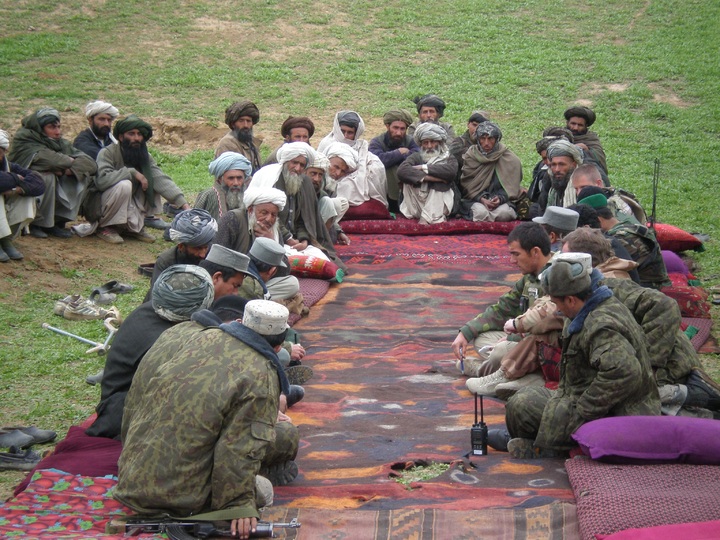
Taliban. Creative Commons CC0.
Qualifying the status of individuals is also a point of contention between warring parties because of the binding effects of international norms on the protection of civilians and the treatment of captured combatants. For example, members of the United Nations Human Rights Office in Afghanistan were in constant discussion with the Taliban and the U.S. military to determine the combatant status of targets of violence, including the police(10)Adam Baczko, La guerre par le droit… op. cit..
The Growing Role of Social Networks
Thus, international law has become an unavoidable issue for all warring parties. From the armed forces of the great powers to insurrectionary movements, all are aware that war is also informational and that the outcome of an armed conflict plays out in front of and according to international audiences and bodies. Their very real limitations should not conceal their effects. The current war in Ukraine, where denunciations of crimes perpetrated by Russian and Ukrainian immediately go viral on social media networks, shows that while international institutions are powerless to prevent atrocities, they have succeeded in making them a determining stake in the conduct of war and its resolution.
Adam Baczko is a CNRS research fellow at the Center for International Studies (CERI). He conducts research on the formation of legal institutions by armed movements and international operators in contexts of armed conflict, with a particular focus on Afghanistan, Syria and Mali. See all of his publications.
Notes
| ↑1 | Élisabeth Claverie, “Mettre en cause la légitimité de la violence d’État. La justice pénale internationale comme institution, comme dispositif et comme scène” [Questioning the legitimacy of state violence. International criminal justice as an institution, a tool, and a stage], Quaderni 78, 2012, p. 67-83. |
|---|---|
| ↑2 | Philip Alston, Report of the Special Rapporteur on Extrajudicial, Summary or Arbitrary Executions. Study on Targeted Killings, Geneva, United Nations Human Rights Council, 2010; Amrit Singh, Globalizing Torture. CIA Secret Detention and Extraordinary Rendition, New York, Open Society, 2013; Anne Le Huérou, Aude Merlin, Amandine Regamey and Elisabeth Sieca Kozlowski (ed.), Chechnya at War and Beyond, London, Routledge, 2014. |
| ↑3 | Craig Jones, The War Lawyers: The United States, Israel, and Juridical Warfare, Oxford, Oxford University Press, 2020. |
| ↑4 | Eyal Weizman, The Least of All Possible Evils: Humanitarian Violence from Arendt to Gaza, New York, Verso Books, 2011. In 2005, Lisa Hajjar had already shown that “the [Israeli] system of military courts has also provided a framework for the deployment of legal strategies and the development of legal discourses to address conflict.” Lisa Hajjar, Courting Conflict: The Israeli Military Court System in the West Bank and Gaza, Berkeley, University of California Press, 2005, p. 2‑3. |
| ↑5 | Adam Baczko, La guerre par le droit. Les tribunaux Taliban en Afghanistan [War by law. The Taliban courts in Afghanistan], CNRS Editions, 2021, p. 220-221. |
| ↑6 | Mariane Ferme and Daniel Hoffman, “Combattants irréguliers et discours international des droits de l’homme dans les guerres civiles africaines. Le cas des “chasseurs” sierra-léonais” [Irregular fighters and international human rights discourse in African civil wars. The case of the Sierra Leonean “hunters”], Politique africaine 88 (4), 2002, p. 27-48; Daniel Hoffman, “The Civilian Target in Sierra Leone and Liberia: Political Power, Military Strategy, and Humanitarian Intervention”, African Affairs 103 (411), 2004, p. 211‑226. |
| ↑7 | “ The Democratic Self-Rule Administration’s Response to the Report of Human Rights Watch Organization”. Also see the exchanges preceding the publication of the report that show the same willingness to present themselves as respectful of human rights. Human Rights Watch, Under Kurdish Rule: Abuses in PYD-run Enclaves of Syria, New York, 2014, p. 95‑107. |
| ↑8 | Adam Baczko, Gilles Dorronsoro and Arthur Quesnay, Syria… op. cit; Leïla Vignal, War-Torn: The Unmaking of Syria, 2011-2021, Oxford, Oxford University Press, 2021. |
| ↑9 | Élisabeth Claverie, “Questions de qualifications: Un mufti bosnien devant le TPIY” [Qualification issues: Bosnian mufti before the ICTY], Terrain 51, 2008, p. 78-93; Élisabeth Claverie, “Vivre dans le “combattantisme”: Parcours d’un chef de milice en Ituri” [Living in “combat”: The story of a militia leader in Ituri] (Democratic Republic of Congo), Terrain 65, 2015, p. 159-181; Jakšić Milena, “Trouver l’enfant soldat” [Finding the child soldier], Terrain, 2019. |
| ↑10 | Adam Baczko, La guerre par le droit… op. cit. |

